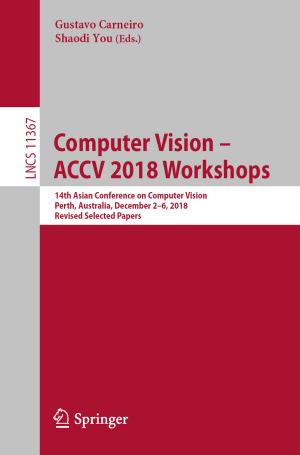Parameter Advising for Multiple Sequence Alignment
Nonfiction, Science & Nature, Science, Biological Sciences, Physiology, Computers, Advanced Computing, Computer Science| Author: | Dan DeBlasio, John Kececioglu | ISBN: | 9783319649184 |
| Publisher: | Springer International Publishing | Publication: | January 4, 2018 |
| Imprint: | Springer | Language: | English |
| Author: | Dan DeBlasio, John Kececioglu |
| ISBN: | 9783319649184 |
| Publisher: | Springer International Publishing |
| Publication: | January 4, 2018 |
| Imprint: | Springer |
| Language: | English |
This book develops a new approach called parameter advising for finding a parameter setting for a sequence aligner that yields a quality alignment of a given set of input sequences. In this framework, a parameter advisor is a procedure that automatically chooses a parameter setting for the input, and has two main ingredients:
(a) the set of parameter choices considered by the advisor, and
(b) an estimator of alignment accuracy used to rank alignments produced by the aligner.
On coupling a parameter advisor with an aligner, once the advisor is trained in a learning phase, the user simply inputs sequences to align, and receives an output alignment from the aligner, where the advisor has automatically selected the parameter setting.
The chapters first lay out the foundations of parameter advising, and then cover applications and extensions of advising. The content
• examines formulations of parameter advising and their computational complexity,
• develops methods for learning good accuracy estimators,
• presents approximation algorithms for finding good sets of parameter choices, and
• assesses software implementations of advising that perform well on real biological data.
Also explored are applications of parameter advising to
• adaptive local realignment, where advising is performed on local regions of the sequences to automatically adapt to varying mutation rates, and
• ensemble alignment, where advising is applied to an ensemble of aligners to effectively yield a new aligner of higher quality than the individual aligners in the ensemble.
The book concludes by offering future directions in advising research.
This book develops a new approach called parameter advising for finding a parameter setting for a sequence aligner that yields a quality alignment of a given set of input sequences. In this framework, a parameter advisor is a procedure that automatically chooses a parameter setting for the input, and has two main ingredients:
(a) the set of parameter choices considered by the advisor, and
(b) an estimator of alignment accuracy used to rank alignments produced by the aligner.
On coupling a parameter advisor with an aligner, once the advisor is trained in a learning phase, the user simply inputs sequences to align, and receives an output alignment from the aligner, where the advisor has automatically selected the parameter setting.
The chapters first lay out the foundations of parameter advising, and then cover applications and extensions of advising. The content
• examines formulations of parameter advising and their computational complexity,
• develops methods for learning good accuracy estimators,
• presents approximation algorithms for finding good sets of parameter choices, and
• assesses software implementations of advising that perform well on real biological data.
Also explored are applications of parameter advising to
• adaptive local realignment, where advising is performed on local regions of the sequences to automatically adapt to varying mutation rates, and
• ensemble alignment, where advising is applied to an ensemble of aligners to effectively yield a new aligner of higher quality than the individual aligners in the ensemble.
The book concludes by offering future directions in advising research.















